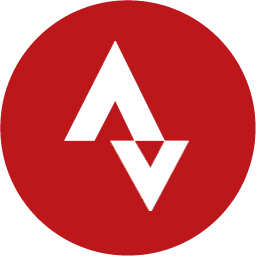The third and final event of a triathlon, the run closes out the chained discipline. Feel like getting into this sport to discover the taste of triple effort? Great! Whether you're a Sunday jogger or an experienced runner, you should know that the running component in triathlon has its own specificities. Focus on this activity at the heart of triathlon, from short distance to marathon!
What does the running event consist of?
First the swim, then the bike, and finally the run: that is the order in which the disciplines are sequenced in triathlon. Triathletes finish their cycling portion and make their second transition. They drop off their road bikes and run the course leading them to the finish line.
The course is laid out as an out-and-back or loop. Depending on the triathlon format, runners may take the route multiple times to complete the given distance. While the race is generally run on bitumen, triathletes may be required to run on a variety of terrain, particularly in cross-triathlon: roads, trails, sand, rocky ground, etc.
The leveling varies depending on the elevation of the area. Sometimes flat or hilly, sometimes steep: there is something for everyone.
The triathlon race portion: what distances?
The running event is contested over both short and long distances. It is the race format that will determine the number of kilometers to be completed:
- triathlon XS: 2.5 km;
- triathlon S: 5 km;
- M triathlon: 10 km (the Olympic distance);
- Half Ironman: 21.1 km (a half marathon);
- L triathlon: 30 km;
- triathlon XL: 30 km;
- triathlon XXL or Ironman: 42.195 km (a marathon).
How to manage the transition to running.
Running represents the most accessible component of the three chained sports. Many people already run regularly before starting triathlon. But it is no less demanding, far from it!
In fact, the running part of triathlon is quite complex and difficult to manage, as the triathlete has a lot on his or her plate after swimming and pedaling for a while. Because of the accumulated fatigue of the body, the effort turns out to be quite different from a classic dry running competition.
In practice, the principle is to anticipate the transition to running during the last few miles of cycling by slightly decreasing the cadence and watts. Keep in mind that the first few strides will be arduous, which is normal: it will take you several minutes to find your rhythm and feel good in your sneakers.
Of course, the mind plays a huge role!
What running shoes for triathlon?
When it comes to equipment, you will need a pair of running shoes, or trail shoes for the cross-triathlon.
The ideal is to choose shoes with good cushioning, comfortable enough to be worn barefoot. That's right, most triathletes run without socks! While it's not imperative, you'll still shave off a few extra seconds during the swim-to-bike transition (T1).
The second criterion also tends to save you time, but this time for the bike-to-run transition (T2). It involves using quick laces that allow you to put on your shoes without tying them. Made of silicone or with knots, these elastic laces automatically lock at the setting of your choice. No risk of them unraveling during your run, convenient!
If you're aiming for performance, go for a lightweight and dynamic model to fly over the asphalt.
To complete your triathlete outfit, you'll need a trifunction, sunglasses and a cap. Also essential if you want to track your time: the GPS watch. It will also be useful to analyze your feat at the end of the triathlon.
How to progress in running with triathlon training.
Running a 10K or a marathon is not prepared the same way! Just like other triathlon disciplines, the running event requires a training plan adapted to the distance you plan to run.
Generally speaking, your sessions will work both endurance and speed and will develop your aerobic and anaerobic capacity. You will be required to alternate split sessions to improve your performance and fundamental endurance footwork to oxygenate the muscles and promote recovery.
VMA, maximum heart rate (max HR), maximum oxygen consumption (VO2 max), lactic acid, threshold...all terms you'll learn to talk running and prepare for your triathlon!
So, ready to cross the finish line of your first triathlon? If so, we suggest you also learn about swimming event and cycling event to approach them with confidence.






